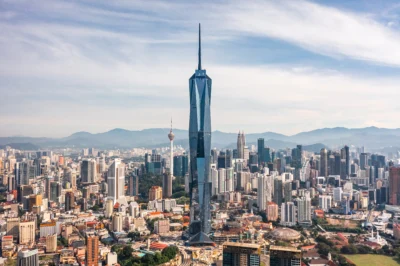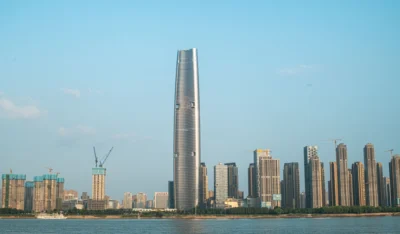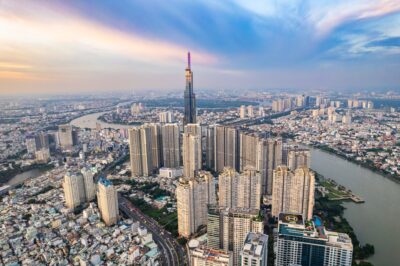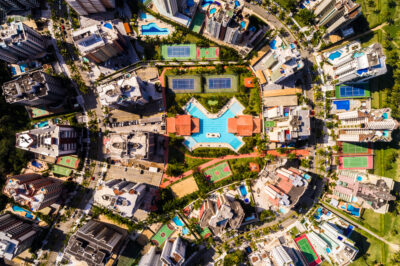Improving the quality of life indoors and outdoors
Experts and industry leaders suggest solutions to issues involved with the stages of construction

Every day, countries all over the world experience conflicts and disasters that often place them in a position to rapidly re-start development. These nations, however, are confined by the lack of tools and capacities for efficient decision-making.
On top of that, we tend to overlook things that are right under our noses, but could make the biggest difference if we only glanced at it. That could be turning off the lights every time we walk out of the room, changing air conditioner filters for better air quality and productivity, or recognising those living on the construction sites that build the offices we work in. Rebuilding the world sustainably not only includes protecting the planet, but also ensuring the welfare of those living in it, especially those involved in the stages of rebuilding.
Fortunately, experts and leading industry decision-makers of today have become more aware of rebuilding the world responsibly and deriving climate positive ways of construction, innovation, and sustainable infrastructure.
Armelle Le Bihan, founder & chief executive officer at Green Building Consulting & Engineering, said in a panel discussion at the PropertyGuru Asia Real Estate Summit 2020 that the focus in rebuilding the world sustainably is on climate change, yet big matters are quite difficult for most stakeholders to grasp as their scope of influence is often limited within a certain supply chain.
“These issues [children welfare, climate change, and air quality] are interconnected within the early stages of construction until the end of life. We need to cross collaborate between all these different moments to reach an impactful change in industries,” she said.
Living amongst wood and bricks
According to statista.com, the construction industry contributes approximately THB422 billion (USD14.7 billion) to the country’s GDP in 2019, proving to be a major contributor to the economy. The United Nations also stated that in Thailand, women migrant and their children living on construction sites are exposed to violence and abuse, as well as lack of healthcare and education. Children living on construction sites are especially vulnerable to child labour, with almost a third of those surveyed mentioning starting work before the age of 15.
The construction industry hires the most migrant labourers, particularly from Cambodia, Myanmar, and Laos. Families often live in frail shacks of plywood and tin or refashioned containers, accompanied by poor sanitation and little access to drinking water.
Nicola Crosta, co-founder of Baan Dek Foundation and founder of Impact46, believe in organisations that are focused on construction and children because of the importance of the sector to the economy. There are over 60,000 children living in construction camps, but most people have never even seen one before.
Many of us are fortunate to be able to access the basic necessities in life and are fortunate to have a memorable childhood filled with laughter, toys, and a good education. However, countless children – the same age as our children, grandchildren, cousins, or nieces and nephews – are living in bad quality rooms, sharing unhygienic bathrooms, and growing up in a vulnerable, unsafe place.
Having the right framework
Baan Dek Foundation and Impact46 aim at collaborating with companies to find solutions in improving living conditions to lead these children into a positive life trajectory. Yet, many companies don’t have a single clue on what steps need to be taken.
Nicola said, “one of the reasons why the conditions of these kids aren’t great is because you don’t really know where to start and what to track, but the reality is that the welfare of these children can be measured and it’s not that hard to track, as long as you have the right framework in place.”
The “Chiang Mai Framework for Action” was a list established by Baan Dek Foundation, in collaboration with the UN, that identifies 12 actions that can be put in place to improve the life of such kids. For instance, a point directs companies to measure whether the kids living on these construction sites have been enrolled in schools, as education is paramount in transforming their lives.
Nicola added that at the end of the day, the goal is to see problems solved through the integration of good practices, not by non-profit or government intervention. As a result, the organisation has developed two key tools: guidelines that provide concrete directions for companies to implement and a self-assessment tool that allows companies to run live surveys on all construction camps they operate.
It is not only important to focus on the stages of construction, but the end result, as well. By executing smart air monitoring systems in buildings and committing to environmental, social, and governance (ESG) initiatives, the world and its people can live healthily and happily.
Despite the benefits of modern amenities, our shift from fields and farms to factories and offices has caused an imbalance in our natural biological rhythms. From basking in natural sunlight to being couped up in air-conditioned rooms with smart devices, our health and happiness continue to take a huge toll.
The unknown dangers of indoor spaces
Hasan Buri Tosun, the co-founder of Sensgreen, focuses on making indoors a healthier space for everyone. The company works towards improving the overall wellbeing of occupants to make spaces more efficient and energy-saving.
He mentioned that “the outdoors, you have rain, wind, and at some point in the night, the city cleans itself. But indoors, you have furniture, paints, chemicals, printers in the office – problems to control climate indoors, so it ends up being more polluted than outdoors.”
Sensgreen collaborates with various stakeholders to improve living environments via the use of QR codes in their devices. Once scanned, the QR codes display the air quality of the building, and occupants can provide feedback to the building managers.
The company is building a marketplace that connects the building management to the exact partner to access services that will improve the facility, such as filter replacement or air purification at a minimum investment.
Sensgreen has data that allows tracking for driving change and improvement. Tracing KPIs of operations and transparency is key because, at the end of the day, it’s about the operation managers and what they choose to do. “You need to build transparency for all stakeholders so everyone can see what is happening and if people are doing what they’re supposed to or not,” Hasan added.
Companies taking action
In conclusion, Nicola notes that engaging companies is a much more difficult task than engaging families in construction camps. However, things are changing significantly and there is a positive shift underway. As consumers become more aware and expectations increase for firms to meet CSR standards, industries are being affected by all these big trends, which meant taking the responsibility.
“The key point is that many companies are starting to see that investing in these social programs is actually an investment. It is clear in our model that companies that take these issues seriously get huge benefits. It’s not just the right thing to do, but also a smart thing to do. There are fewer accidents that they need to manage, a more stable labour force, better company reputation, and a stronger internal reputation to attract and retain talent,” he said.
On the other hand, Hasan unveils that there has been a shift in companies wanting to integrate more environmentally responsible tech, particularly after the COVID-19 pandemic. Everyone has been financially affected by the pandemic but implementing responsible practices can help with the bills.
“Better air quality means better performance of employees in the workplace. You can improve up to 20 percent of the workforce, so in the long term, this means better financial performance for the company. If there’s better workspace, then everybody wants to work with you. There’s competition on the talent side and nobody wants to work with a company that provides poor working conditions,” added Hasan.
This article originally appeared in asiarealestatesummit.com
Recommended
Malaysia property market rebounds with foreign interest and growth
The nation’s property market is stirring to life, fuelled by foreign buyers and major infrastructure drives
China’s renewable energy surge redefines housing norms and development
From exporting solar panels to building entire green-powered neighbourhoods, China’s renewable surge is redefining housing norms
Philippine real estate stays resilient amid political turmoil
The arrest of former President Rodrigo Duterte is a huge political plot twist. But the real estate sector in the Philippines is not (yet) flinching
Vietnam housing market poised for growth despite tariff challenges
With possible punitive US tariffs looming over the economy, Vietnam’s otherwise buoyant housing market has entered a cautious stage






